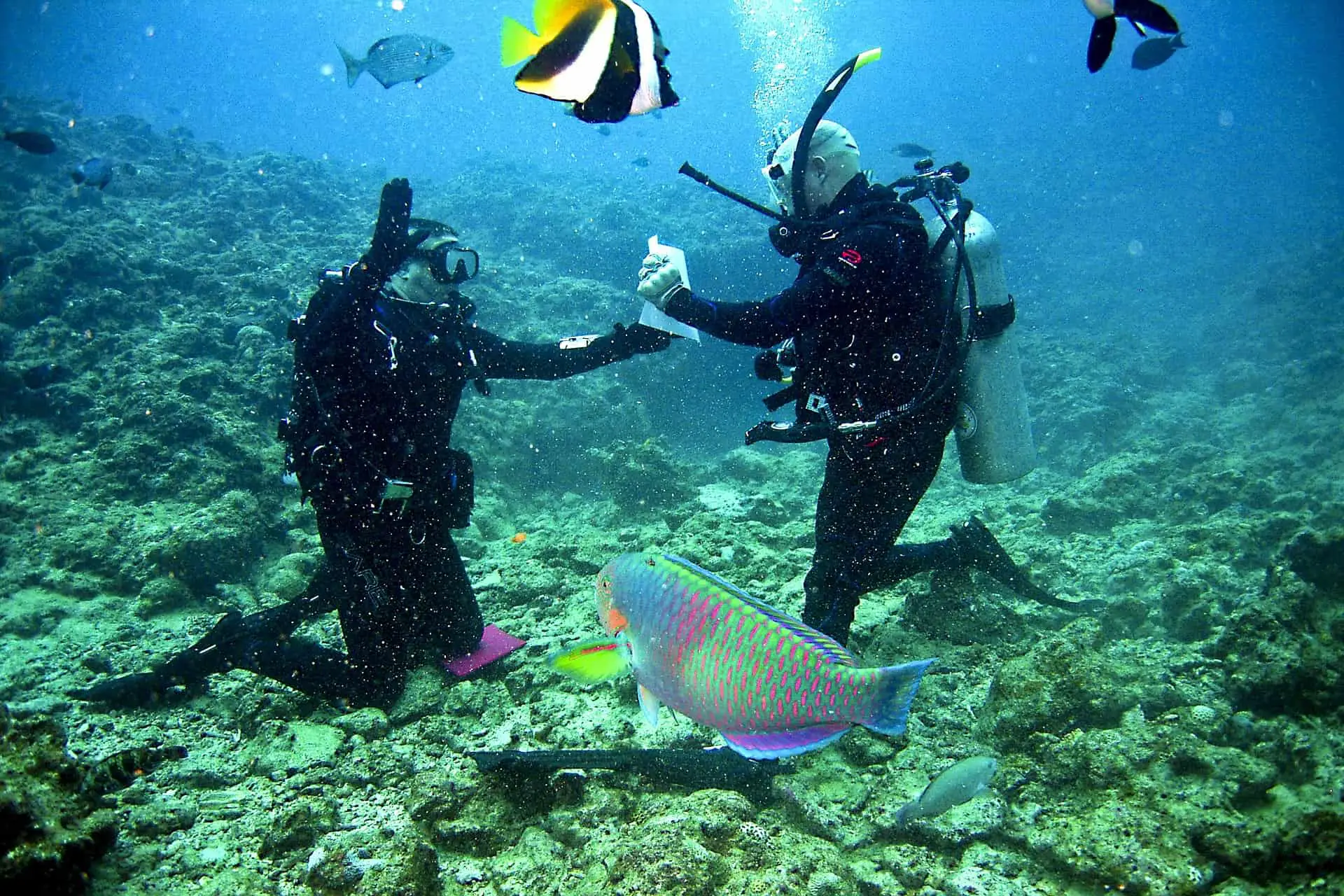Pulmonary Barotrauma – What is it and How can you Prevent it?
For most of us, the phrase pulmonary barotrauma sounds pretty intimidating. And probably for good reason. This medical condition threatens divers each time they hit the water, and the consequences can be severe.
But don’t let a lack of familiarity turn this risk into a monster. The more you understand pulmonary barotrauma, the safer you’ll be and the less threatening it becomes. Let’s get right into it.
What is Pulmonary Barotrauma?
Often referred to as a burst lung, this condition arises because of pressure changes during ascent. Simply stated, if the diver doesn’t take the appropriate steps to exhale or if there is a problem with exhalation during ascent, the air inside of the lungs expands to the point of bursting.
This happens because, just like other types of vessels that hold gas, your lungs are subject to the rules of Physics such as Boyle’s Law.
For all of the biology-buffs out there, what is happening specifically here is that the tissues in the alveoli (the little air sacs within your lung) tear as a result of the increased pressure. As the tears occur, air escapes into the blood capillaries to be carried back to the heart.
Clearly, in this situation, things become life-threatening really quickly as the air bubbles expand and start to block blood passages in the heart and to the brain.
What are the symptoms?
There are a few telltale signs of pulmonary barotrauma that you should be able to identify, including shortness of breath, a change in the quality of voice, and a strange crackling sensation under the surface of the skin around the chest cavity.
There may also be a feeling of pain in the throat and chest or a sensation fullness in the neck. Severe cases will be characterized by unconsciousness.
While these symptoms may become noticeable within minutes of ascension, it is also possible for them to show up and worsen within hours of the dive.

Is there anything that can be done at the moment?
If you feel that your dive buddy is experiencing pulmonary barotrauma, it’s important to act fast. There’s no way to know how serious their situation is until they are in a hospital and receiving treatment.
So, before starting any dive, you should always know where the nearest medical center is or have access to some form of communication to be able to call for help. Once the individual has arrived at the hospital, the most effective form of treatment is the recompression chamber, which allows the air bubbles to pass through to less crucial blood vessels.
You may be asking yourself what the best protocol is before arriving at the hospital. In the case that the diver is conscious but showing signs of pulmonary barotrauma, the best course of action is to lay him on his side with his head just slightly lower than the heart. 100% oxygen should be administered while waiting for medical attention.
In the case of total unconsciousness, it’s crucial to do everything possible to maintain life.
How do you prevent it?
While it’s important to review some of the things that can be done at the moment that a diver is experiencing pulmonary barotrauma, it’s much more useful to talk about prevention. After all, this situation is almost completely avoidable, given proper training.
Remember to breathe
One thing that you’ll hear repeatedly throughout your certification training is to breathe while you ascend. Sometimes, when we’re busy thinking about our environment, our diving buddy, and any other thing that steals our attention under the water, we forget to breathe.
This is especially true when we’re focused on moving towards the surface. However, avoiding exhalation during ascension is the worst thing that you can do, because it traps the gases inside your lungs and allows for pressure to increase.
Go slow
Before your dive, you should familiarize yourself with your diving chart and make a plan for the ascent. And, more importantly: stick to the plan.
Many inexperienced divers will follow their instinct to rocket to the surface at the first sign of an emergency, or even something seeming slightly off. In addition to increasing the risk of decompression sickness, ascending quickly doesn’t allow you enough time to exhale the air properly.
If things do start to go awry underwater, it’s always best to remain calm and remember your emergency procedures.
What are some other considerations?
One last thing to keep in mind when thinking about the risk of pulmonary barotrauma is the fact that the most drastic changes in pressure occur closer to the surface of the water.
This is crucial to remember because it can be tempting to start to pick up the pace once you see those sunshine rays beaming through the water. No matter how close you think you are to the top, stick to the diving chart and take your time.
Prevention, prevention, prevention
It should be pretty obvious by now that Pulmonary Barotrauma is not something that is easily treated, but it is something that is reasonably prevented. The more you know about the risks, the better prepared you can be to ascend slowly and safely.
Always make sure to look out for your buddy and remind them of the importance of learning about pulmonary barotrauma prevention. The more you both know, the more prepared you are to avoid complications and enjoy your dive!


